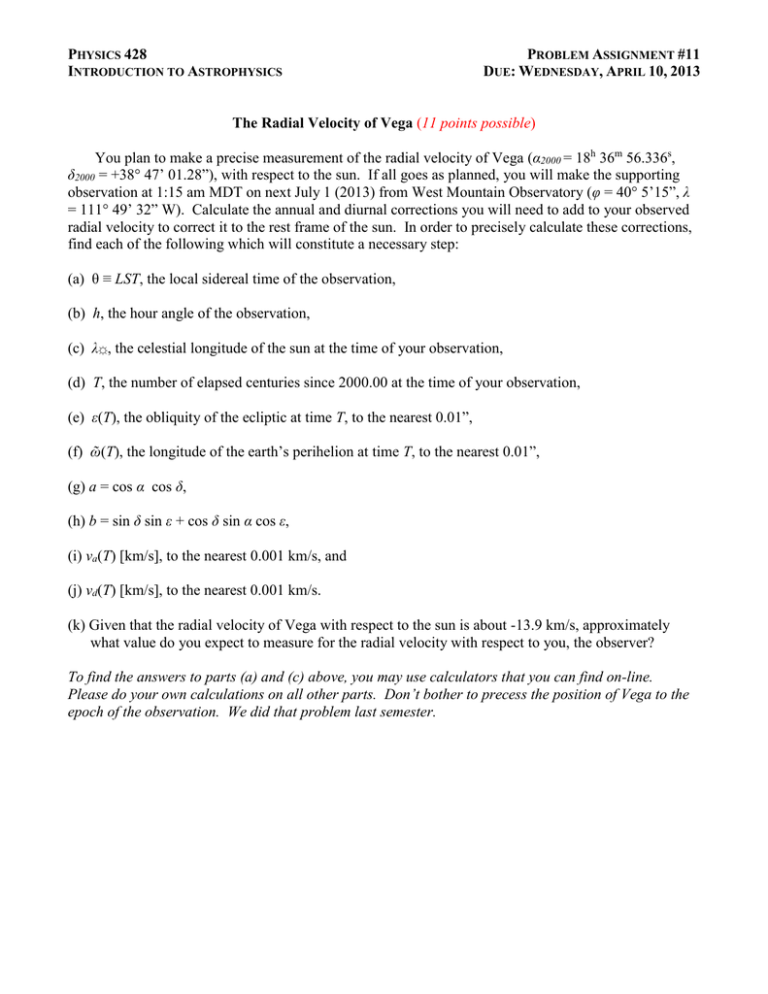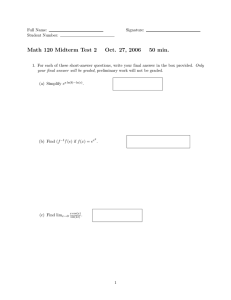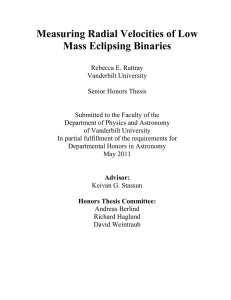P 428 A #11
advertisement

PHYSICS 428 INTRODUCTION TO ASTROPHYSICS PROBLEM ASSIGNMENT #11 DUE: WEDNESDAY, APRIL 10, 2013 The Radial Velocity of Vega (11 points possible) You plan to make a precise measurement of the radial velocity of Vega (α2000 = 18h 36m 56.336s, δ2000 = +38° 47’ 01.28”), with respect to the sun. If all goes as planned, you will make the supporting observation at 1:15 am MDT on next July 1 (2013) from West Mountain Observatory (φ = 40° 5’15”, λ = 111° 49’ 32” W). Calculate the annual and diurnal corrections you will need to add to your observed radial velocity to correct it to the rest frame of the sun. In order to precisely calculate these corrections, find each of the following which will constitute a necessary step: (a) θ ≡ LST, the local sidereal time of the observation, (b) h, the hour angle of the observation, (c) λ☼, the celestial longitude of the sun at the time of your observation, (d) T, the number of elapsed centuries since 2000.00 at the time of your observation, (e) ε(T), the obliquity of the ecliptic at time T, to the nearest 0.01”, (f) ῶ(T), the longitude of the earth’s perihelion at time T, to the nearest 0.01”, (g) a = cos α cos δ, (h) b = sin δ sin ε + cos δ sin α cos ε, (i) va(T) [km/s], to the nearest 0.001 km/s, and (j) vd(T) [km/s], to the nearest 0.001 km/s. (k) Given that the radial velocity of Vega with respect to the sun is about -13.9 km/s, approximately what value do you expect to measure for the radial velocity with respect to you, the observer? To find the answers to parts (a) and (c) above, you may use calculators that you can find on-line. Please do your own calculations on all other parts. Don’t bother to precess the position of Vega to the epoch of the observation. We did that problem last semester.



